Portugal and road tolls
We had to drive 140km this morning before getting to the start of the Portuguese toll road, and all that we had read about it being confusing was to some degree correct. Just after the border there is a place for foreign vehicles to pull off the highway and go through a set of "gates" which accept credit cards. When we got there another motorhome was already parked there with the occupants trying to figure out what was required. While we went through the same process a number of other vehicles arrived and their passengers were also more than a little confused. However it turned out to be pretty simple. At one of the gates, the electronics read the vehicle license plate, once recognized the credit card slot flashes blue and at this point one inserts a credit card. The toll system has now linked the credit card to the vehicle license plate. Thereafter on electronic only toll roads the toll charges are applied automatically to your card. You get a printed receipt from the card machine to verify you have registered which you may have to show at some point. This registration lasts 30 days. So why was it confusing? Because there are at least 3 other options that a foreigner could use to pay tolls, there are two different sets of toll roads and some of the automatic payment mechanisms work on both sets of toll roads. And finally the official websites are hard to find, and even harder to find English versions of them.
After the toll stress was over we had a pleasant trip on reasonably good roads across the south of Portugal to the small town of Sagres where there are two prominent peninsulas jutting out into the Atlantic. The town of Sagres is on the southern most of these and is the site of the Navigation School founded by Henry the Navigator in the 1400s. A school that later trained the likes of Vasco De Gama, Diaz, Magellan and Columbus (though as you will see from the wiki page there is some doubt about this belief). There is an old fort on the Peninsula at Sagres that one can tour and it turned out that the weather was great for a stroll around the headlands watching the nearby surfers and local fishermen.
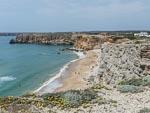
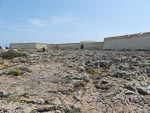
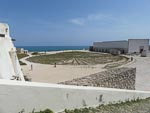
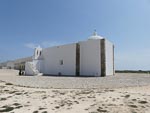
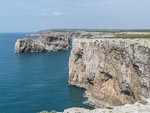
Nearby Cape St Vincent has an operational lighthouse and an older structure (with modern restaurant) at the base of the lighthouse and seems to be the preferred tour destination as the place was packed with tour buses, and booths selling food or trinkets.
There is a large parking lot on the peninsula at Sagres and I am sure we could have parked there overnight with no facilities.
Many motorhomes did park for the night in the gravel parking lot at the tip of Cape St Vincent. We chose a bare patch of ground off the road about 1/2 mile from the tip of Cape St Vincent.